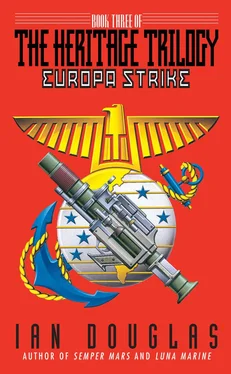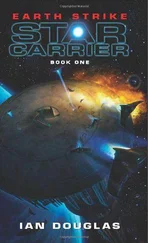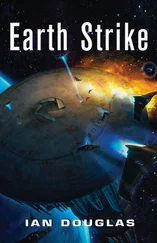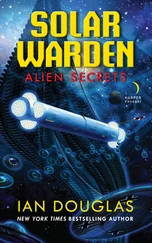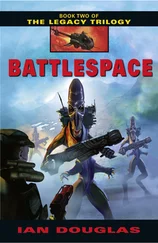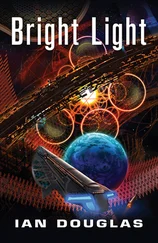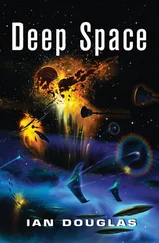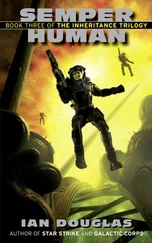1 ...6 7 8 10 11 12 ...22 “Whee-oo!” Tone said, excited. “What a ride! What you think, Luck? They’re pulling maybe eight Gs?”
“Cargo launch,” he replied. “Betcha it’s unmanned and pulling twelve Gs, easy!”
The hurtling transport began arching overhead as it slid into an easterly launch path. When Vandenberg had first been converted to launch operations in the last century, all launches had been into polar or high-inclination orbits, since an east or southeasterly launch path would take the vehicle over the dangerously crowded urban areas of Greater Los Angeles. Low-inclination launches from V-berg had become possible—if not exactly politically acceptable—with the development of single-stage-to-orbit boosters and, later, the Laser Launch System, or LLS. Launches routinely passed over Greater LA every day now…though that, too, was yet another cause for periodic demonstrations.
The cargo transport was now nothing but a star, brighter than Venus, sliding rapidly down the eastern sky. The ground-based lasers, playing their steady, invisible tattoo against the water reaction mass in the transport’s plasma chamber, could boost it to orbital velocity in less than 120 seconds. Downrange lasers, at Edwards and San Clemente, would pick up the vehicle when it passed beyond Vandenberg’s laser-launch horizon and see it safely past LA. Once it was in orbit, conventional onboard engines would kick in and guide it to its final destination—almost certainly the U.S. Deep Space Orbital Facility at L-3.
It was a bit eerie for Lucky, imagining himself riding that invisible laser fire into space in another few days.
Space. Yeah…even if it was Europa, he would be in space at last.
19 SEPTEMBER 2067
Space Tracking and Navigation
Network (STAN-NET)
Widely Distributed, Earth and
Near-Earth Space
0238 hours (Zulu)
They called him Stan, although, like most artificial intelligences, he never thought of himself in terms of names or self-identity. Even the pronoun he wasn’t appropriate, though it didn’t matter to him one way or another. It was simply part of the persona assigned him by his human handlers for their own comfort and convenience.
“He” could not even be said to have a particular location in space. Like all AIs, he was the product of software—interconnected programs running on over three hundred different pieces of hardware, and those machines were scattered across space, from the TCC-5000 still coordinating space tracking operations from Cheyenne Mountain to the fifteen different Honeywell-Toshiba IC-1090s aboard each satellite in the TrackStar Geosynch constellation. His primary task was to monitor all spacecraft, satellites, and orbital facilities in cis-Lunar space; his secondary tasks changed periodically, but frequently involved alerting other AIs in the Global Network of specific events within his purview.
Such an event, linked to such a task, was occurring now.
One of Stan’s remote trackers, a twelve-ton Argus-Hera satellite in high Earth orbit, had just registered an unscheduled burn and funneled the observation through to all of Stan’s extended and massively parallel processor sites.
The source was KE26-GEO, the Chinese industrial/construction park in geosynch, at 108° East.
There were many such parks—in LEO, HEO, GEO, and in the various LaGrange points of the Earth-Moon system. Most had started off as small space stations for research, communications, or small-scale microgravity industrial sites, then grown, often haphazardly, into collections of fuel tanks, pumping apparatus, construction shacks, solar cell arrays, habitat and lab modules, and spacecraft. A few—like the U.S. facility at L-3, or the Chinese KE26 station in geosynch—included the high-energy processing and containment facilities necessary for the manufacture and storage of antimatter.
Stan knew the location of each spacecraft within his sphere of attention—from 100 kilometers above the Earth to the orbit of the Moon—whether they were in orbit or under thrust. His primary programming had him functioning as a kind of space traffic controller—not that collision was a major threat; usually, the only times ships were in danger of collision was during approach or departure from a space station or other orbital facility, and at those times, ship vectors and delta-V burns were the responsibility of the ship and station personnel and AIs.
Still, there was considerable danger from the cloud of debris released by human activities in space since the beginning of the space age over a century before, everything from spent boosters and payload protective fairings to flecks of paint, which could be deadly if they impacted with, say, the visor of a pressure suit at several kilometers per second. Stan couldn’t track individual paint flecks, but his database of stray objects included things as small as two-centimeter bolts and a stray canister of exposed infrared film. Stan’s warnings of potential vector conflicts had resulted in 408 minor course corrections in the 12.37634912 years since his initialization. Space faring powers nearly always queried Stan on the possible outcome of specific boosts, vector changes, and time-distance-acceleration problems.
The Chinese had stopped making such requests three months ago. Technically, by treaty they were required to announce all launches in advance, but the requirement was strictly one of courtesy, not enforcement.
In fact, it was possible that they were operating their own deep-space tracking network. Stan was interested, however, in the politics of the situation. He did not understand the current tension between the Chinese and the newly created Confederation of World States, a loose trade and defense organization headed by the United States, Russia, and Japan that included all of the other space-capable powers. That such tension existed was self-evident from the news broadcasts of both sides, and from the fact that Stan’s secondary program tasks had increasingly involved surveillance of Chinese space assets for DODNET, the complex of AIs running much of the U.S. military’s command, control, and communications networks.
There were, at the moment, no fewer than nineteen spacecraft of various types at KE26-GEO…most of them cargo craft boosted from Xichang. Two were the antimatter-powered cruisers Xing Shan (the Star Mountain) and her sister ship, the Xing Feng (the Star Wind). A third was a research vessel, the Tiantan Shandian, which DOD-NET translated roughly as the Heavenly Lightning.
Stan had received numerous requests for updates on the Star Mountain’s status in the past few weeks, and he’d dutifully passed on all observations. There had not been much to report; the huge spacecraft remained inert, though thermal and radiation readings suggested that its fusion power plant was being brought to full output, probably in anticipation of a launch. He could make out little detail, however; the Argus-Hera tracking satellites, of all his assets, came closest at periodic intervals to the Chinese facility—but that was never closer than some 20,000 kilometers.
Still, standing orders required that any change in the status of either the Xing Shan or the Xing Feng be reported to the Pentagon at once.
Now, though, three of his Argus-Heras had picked up the bright, hot flare of a burn at KE26-GEO. Interestingly, it was not the Star Mountain that was accelerating, but the much older Heavenly Lightning.
The Lightning was listed as a deep space research vessel—415 meters long, massing 25,300 tons. The vessel was currently mounted on a two-stage stack, with a heavily modified Liliang ground-to-orbit booster as a strap-on first stage.
Stan monitored the burn for five seconds before arriving at any decisions. His orders did not explicitly mention the Heavenly Lightning, but he had considerable discretionary flexibility—a large part of the reason for artificially intelligent systems, after all. He noted that the Liliang booster’s flare included high levels of gamma radiation—a sure sign that the vehicle’s thrust had been upgraded through the simple expedient of adding a small quantity of antimatter to the reaction chamber, increasing the specific impulse of the booster’s hydrogen-oxygen fuel mix.
Читать дальше
